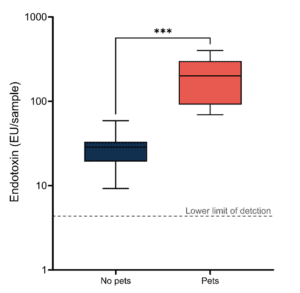‘How To’ Apollo! Exciting updates with InBio’s air sampling device
Following the successful US launch of Apollo at the recent American Academy of Allergy, Asthma, and Immunology meeting. InBio has released a ‘How to’ video for Apollo, detailing device set-up, sampling, & analysis options. Apollo greatly simplifies the collection of airborne allergens, endotoxin, and other airborne contaminants.
Apollo Benefits
Key Features of Apollo include:
- Long-duration sampling
- Improved allergen capture efficacy over IOMs and electrostatic dust collectors (EDC)
- High flow rate (>500L/min)
- Whisper quiet, under 40 decibels
- User-friendly
- Suitable for the sampling of endotoxin and allergens
Apollo for Endotoxin and Beyond!
Apollo is suitable for the detection of endotoxin in indoor environments. Detectable levels of endotoxin were found from as soon as one day.Increased sampling time correlates linearly with endotoxin concentration up to at least seven days. InBio’s studies have also shown increased endotoxin levels correlates to pet ownership in UK homes, demonstrating Apollo’s reliability.

Through an optimized extraction method, InBio can measure endotoxin and a full panel of allergens from a single sample.
InBio scientists, in collaboration with Cardiff Metropolitan University, are researching Apollo’s ability to capture to capture a range of microorganisms, including fungi/molds, bacteria and bacteriophages. Proof of principle experiments demonstrated excellent efficacy.
Clinical Trials
When conducting allergen immunotherapy clinical trials, it is important to perform allergen exposure measurements. Previously this has been performed by collecting settled dust samples with InBio’s DUSTREAM collector. Now, using Apollo, aerosolised allergen can also be assessed.
Apollo is currently being used in two clinical trial settings in collaboration with Imperial College London and Manchester University, assessing allergen exposure in patients’ homes. This data is providing valuable insight for clinicians to determine what allergens patients are being exposed to in their homes and linking this information with symptoms scores. Keep an eye out for updates.

Want in? Subscribe to the InBio Newsletter stay up to date on all the latest innovations.
